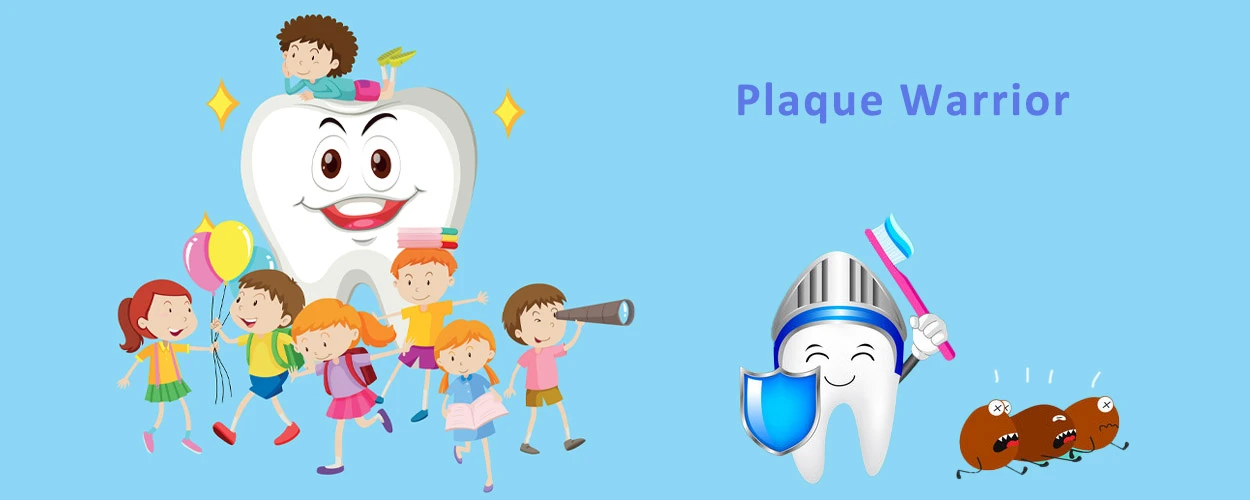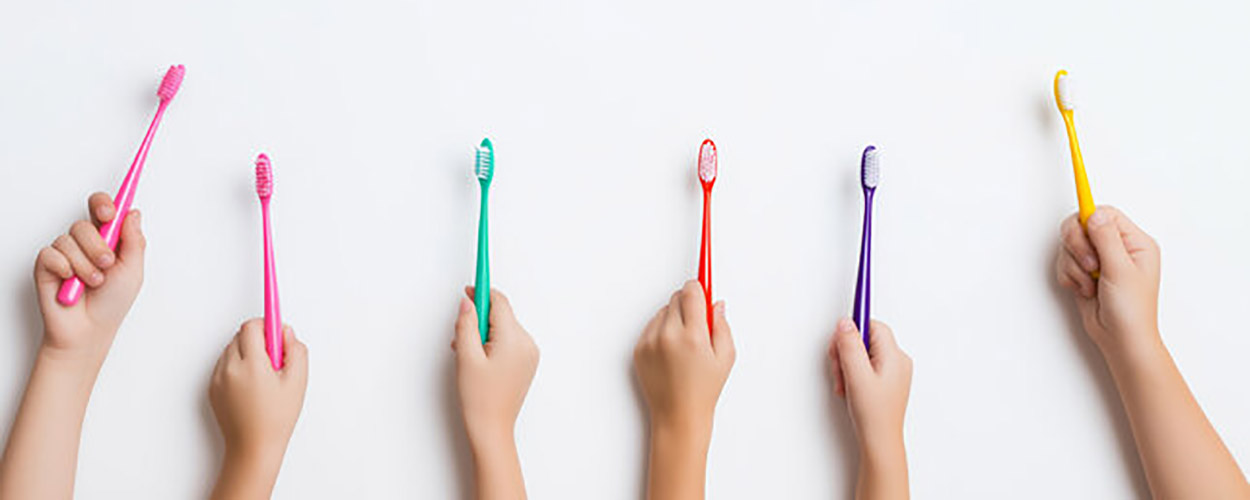La salud bucal constituye un determinante biológico crítico del desarrollo sistémico pediátrico. OMS los datos indican 514 millones de niños a nivel mundial presentes con caries no tratada en la dentición primaria. Caries de la primera infancia (ECC) representa la enfermedad crónica más frecuente entre los niños menores de seis años. Detrás de esto, Refleja a los padres’ malentendido cognitivo y falta de métodos en la educación oral. En este artículo, Un dentista pediátrico que ha estado practicando durante más de diez años resume las estrategias de capacitación profesional y práctica para ayudar a los padres a construir un sistema de hábitos de salud oral que beneficiará a sus hijos durante toda la vida..
1. Nutritional intervention during pregnancy: Strengthening the innate Foundation of oral health
Tooth germs start to form from the 6th week of the fetal period. The intake of calcium, phosphorus and vitamin D during pregnancy directly affects the development of tooth enamel. It is recommended that pregnant women supplement 1000mg of calcium daily (equivalent to 500ml of milk +50g of cheese) and increase their sources of vitamin D (such as deep-sea fish and egg yolks can be consumed). Clinical studies have confirmed that the vitamin D level of mothers during pregnancy is significantly negatively correlated with the incidence of dental caries in their children at the age of 6 (PAG<0.05).
2. 0-1 años de edad: Key guidance for oral tactile sensitivity period
After a baby is born, gum massage is necessary. Use a silicone finger brush to gently clean it in the morning and evening every day. When the baby teeth at 6 months of age come in, it is recommended to use the “three-zone cleaning method” : divide the oral cavity into the left buccal area, the right buccal area and the tongue surface area. Use a 45-degree Angle brush to touch the gum line and gently brush each area for 10 artículos de segunda clase. The focus at this stage is not on removing food residues, but on establishing neural reflex associations.
3. Cross-sensory training: tactile and gustatory joint development
- Táctil: Use silicone Chewies alineador of different textures (protrusions/stripes/waves) to stimulate gum development
- Gustativo: Introduce naturally bitter foods (brócoli/col rizada) después de la edad de 2 to reduce dependence on sweet foods
- Visual: Observe the distribution of dental plaque using an ultraviolet irradiation instrument
Fomentar la exploración de masticación y la conciencia de la placa a través de juegos de rol como “Guerrera” Durante el cepillado. A NOSOTROS. La investigación conductual pediátrica indica que las rutinas gamificadas mejoran el cumplimiento por parte de 73%.

4. Tool science: Tools determine the quality of habit formation
Evolución del cepillo de dientes: Use silicone material before the age of 1, switch to super soft bristles and cartoon design from 2 a 4 años, and only use electric toothbrushes after the age of 5.
Toothpaste advanced method : Use fluoride-free gel in the early stage of tooth eruption. After the age of 2, transition to children’s toothpaste containing 500ppm of sodium fluoride (the dosage should be controlled to the size of a grain of rice).

5. Reloj dietético: Establishing biological rhythmic protection
Formulate the “322” dietary rules:
- 3-hour interval : there should be at least a 3-hour interval between main meals and snacks to ensure that saliva fully neutralizes the acidic environment
- 2 types of foods to avoid : Alimentos pegajosos (gummy candies, preserved fruits) and long-lasting sugary foods (piruletas, bebidas azucaradas) should be eaten sparingly or avoided altogether
- 2 essential items : At the end of each meal, you can have “refreshing foods” such as apple chunks and celery strips, ensuring a daily intake of 200g of high-fiber ingredients
Al masticar manzanas, the fibers rub against the surface of the teeth, which can remove dental plaque and food debris . Experiments show that continuous chewing of apples can reduce dental plaque coverage by 15%-20%. Crude fiber forms a “broom effect” during chewing, cleaning the residues between teeth and on the occlusal surface . The physical friction effect of celery fiber can reduce the risk of interproximal caries. Un total de 20 minutes of chewing exercise daily can increase the width of children ‘s dental arches (the Pont index increases by 0.2-0.5) . Dietary fiber adsorbs cariogenic sugars, reducing the time free sugars come into contact with the tooth surface.
6. Incentivo positivo: Application of reward Mechanism
Create the “Teeth Defense Battle” points table: Brush your teeth in the morning and evening to earn 1 star each, and use dental floss correctly to earn an additional star. Accumulate 10 stars to redeem rewards such as toys and bedtime stories. Neurological research has confirmed that the dopamine reward mechanism can increase the efficiency of habit formation by 40%.

7. Fine management during the transition period: Special attention to during the tooth replacement stage
Ⅰ. Treatment of loose teeth during the tooth replacement period
Gently shaking 10 times a day can accelerate osteoclast activity through mechanical stimulation and promote physiological resorption of the tooth root . Experimental data show that regular shaking can shorten the cycle of deciduous tooth loss by 3 a 5 days . La presión moderada puede activar la actividad de los osteoblastos en el hueso alveolar, creating a better bone guidance space for the eruption of permanent teeth.
Ⅱ. Permanent tooth eruption period
Use Chewies de alineador de silicona para aliviar la incomodidad. The elastic modulus of silicone material (0.5-1.5MPA) can precisely disperse the pressure on the gums and relieve swelling and pain during the eruption period . Thermal imaging detection showed that local blood flow increased by 35% after use. The wavy surface design of the gum can enhance the coordination of the masticatory muscle group and prevent asymmetry in the development of the dental arch caused by unilateral chewing . The hydrophobic property of food-grade silicone can reduce the adhesion of food residues and lower the incidence of gingivitis during the eruption period . Plaque tests show that the interproximal plaque index decreased by 23% after use.
Ⅲ. Establish a “Tooth Growth Diary” : Record the time/Angle/color of eruption
8. Eliminación del miedo: Desensibilización a escenarios médicos
Desde la edad de 3, Los niños son tomados regularmente para observar a sus padres’ proceso de limpieza dental, para eliminar su miedo a lo desconocido en relación con el examen dental y el tratamiento. La práctica clínica ha demostrado que los niños que tienen más que 6 Las visitas dentales por adelantado tienen 58% Más cooperación con el tratamiento.

9. Chequeos "periódicos": Visitas regulares al dentista
Una vez que se ha eliminado el miedo de su hijo a los chequeos dentales, Puede visitar al dentista con su hijo de forma regular.. Se recomienda que su hijo visite al dentista cada seis meses a un año para un examen oral y limpieza.. Los dentistas pueden detectar de inmediato problemas en la boca del niño, como caries dental, especialmente la detección temprana de problemas como anti-maneras, tapa profunda, etc.. La edad de 4-6 años es el período de oro para el tratamiento de ortodoncia funcional.

10. Padres’ Actualización cognitiva: para eliminar 5 Principales conceptos erróneos de sentido común
| Los dientes primos deben reemplazarse tarde o temprano | Los dientes despreciados con descomposición conducirán a un desarrollo anormal de gérmenes de dientes permanentes |
| Ningún fluoruro es más seguro | La cantidad moderada de fluoruro puede reducir el riesgo de caries dental por 25 por ciento |
| Cepillarse duro es la única forma de limpiar | El cepillado excesivo conducirá a un aumento en la incidencia de defectos en forma de cuña |
| El hilo dental es perjudicial para las encías | El uso correcto puede eliminar 40% de placa adyacente |
| La consulta solo se necesita si tiene dolor de muelas | Aplicación de fluoruro profesional cada 3 meses es más efectivo que el tratamiento |
Conclusión
La gestión de la salud oral de los niños modernos ha entrado en la era de la "prevención de precisión", que requiere que los padres dominen las técnicas de intervención multidimensional de bio-psico-social. La salud bucal es una parte importante de la salud general. Cultivar buenos hábitos de salud oral en niños desde una edad temprana no es solo una forma de dejar que los niños tengan un bocado de dientes sanos y hermosos., pero también una forma de proteger sus brillantes sonrisas en las próximas décadas.


